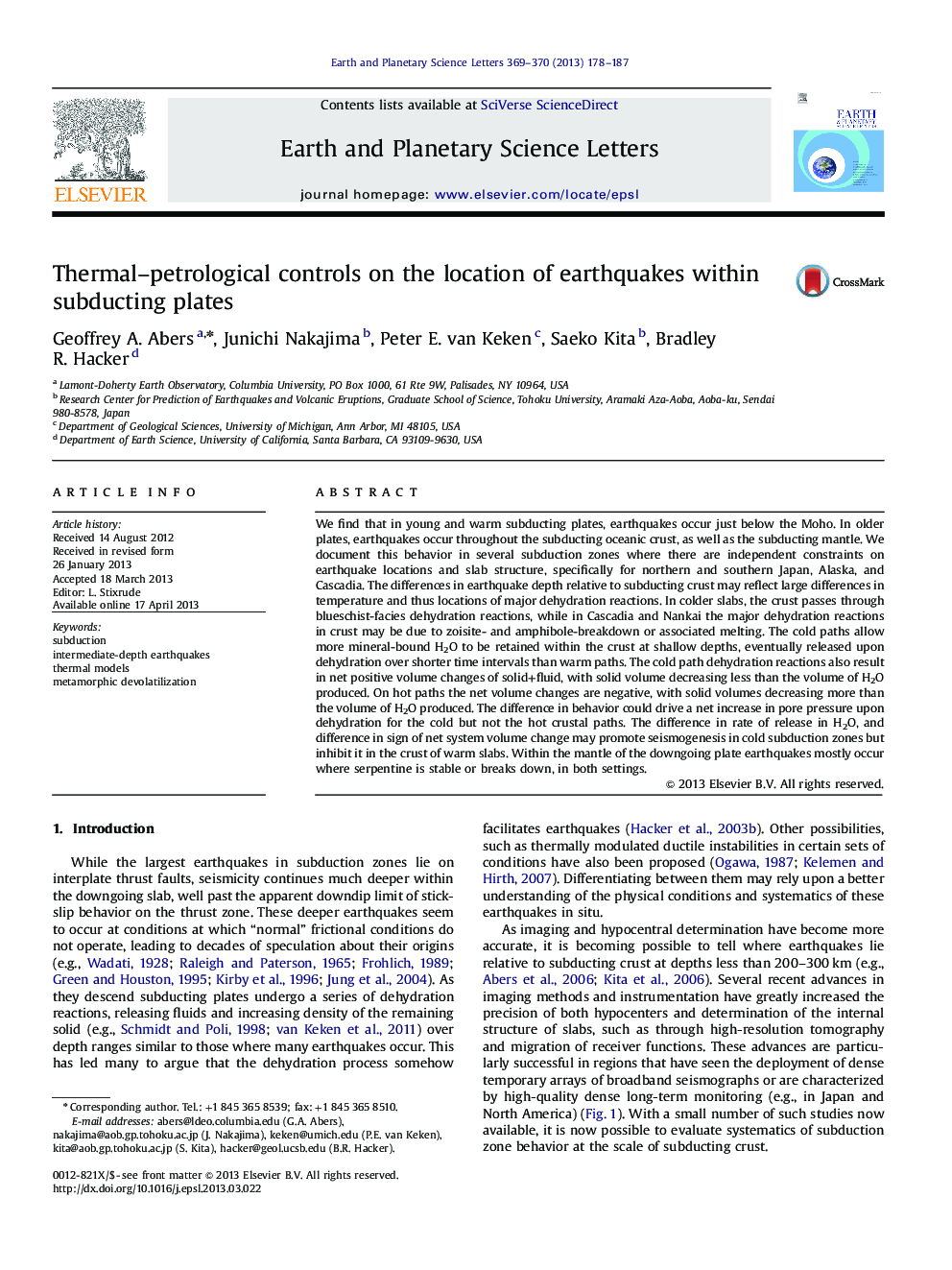| Article ID | Journal | Published Year | Pages | File Type |
|---|---|---|---|---|
| 4677104 | Earth and Planetary Science Letters | 2013 | 10 Pages |
•High-resolution imaging differentiates earthquakes in subducting crust from mantle.•Intermediate-depth earthquakes occur only in mantle in hot slabs.•Intermediate-depth earthquakes occur in subducting crust and mantle in cold slabs.•The sign of predicted pore pressure evolution changes between hot and cold slabs.•Dehydration favors earthquakes in dehydration of cold but not hot slabs.
We find that in young and warm subducting plates, earthquakes occur just below the Moho. In older plates, earthquakes occur throughout the subducting oceanic crust, as well as the subducting mantle. We document this behavior in several subduction zones where there are independent constraints on earthquake locations and slab structure, specifically for northern and southern Japan, Alaska, and Cascadia. The differences in earthquake depth relative to subducting crust may reflect large differences in temperature and thus locations of major dehydration reactions. In colder slabs, the crust passes through blueschist-facies dehydration reactions, while in Cascadia and Nankai the major dehydration reactions in crust may be due to zoisite- and amphibole-breakdown or associated melting. The cold paths allow more mineral-bound H2O to be retained within the crust at shallow depths, eventually released upon dehydration over shorter time intervals than warm paths. The cold path dehydration reactions also result in net positive volume changes of solid+fluid, with solid volume decreasing less than the volume of H2O produced. On hot paths the net volume changes are negative, with solid volumes decreasing more than the volume of H2O produced. The difference in behavior could drive a net increase in pore pressure upon dehydration for the cold but not the hot crustal paths. The difference in rate of release in H2O, and difference in sign of net system volume change may promote seismogenesis in cold subduction zones but inhibit it in the crust of warm slabs. Within the mantle of the downgoing plate earthquakes mostly occur where serpentine is stable or breaks down, in both settings.
